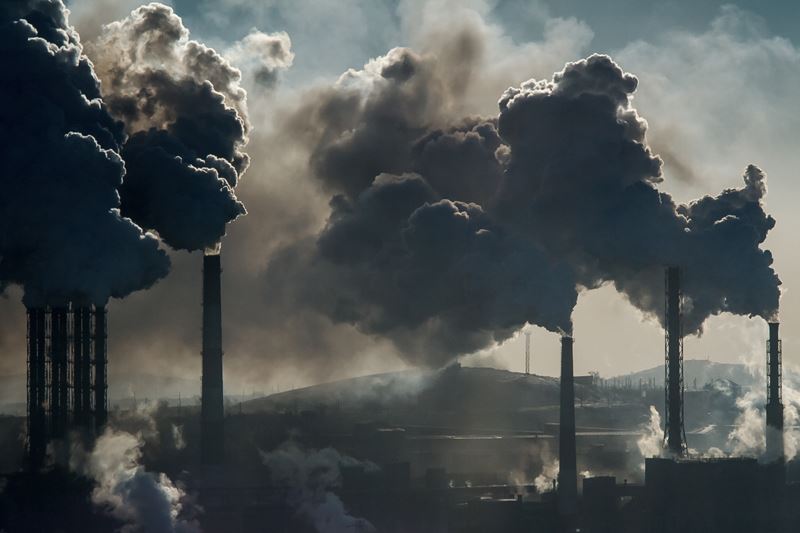Informational
What are Combustion Pollutants?
Combustion pollutants are gases or particles that come from burning materials. The combustion pollutants discussed in this booklet come from burning fuels in appliances. The common fuels burned in these appliances are natural or LP gas, fuel oil, kerosene, wood, or coal.
The types and amounts of pollutants produced depend upon the type of appliance, how well the appliance is installed, maintained, and vented, and the kind of fuel it uses.
Some of the common pollutants produced from burning these fuels are carbon monoxide, nitrogen dioxide, particles, and sulfur dioxide. Particles can have hazardous chemicals attached to them. Other pollutants that can be produced by some appliances are unburned hydrocarbons and aldehydes.
Combustion always produces water vapor. Water vapor is not usually considered a pollutant, but it can act as one. It can result in high humidity and wet surfaces. These conditions encourage the growth of biological pollutants such as house dust mites, molds, and bacteria.

Where Do Combustion Pollutants Come From?
Combustion pollutants found indoors include: outdoor air, tobacco smoke, exhaust from car and lawn mower internal combustion engines, and some hobby activities such as welding, woodburning, and soldering. Combustion pollutants can also come from vented or unvented combustion appliances. These appliances include space heaters, gas ranges and ovens, furnaces, gas water heaters, gas clothes dryers, wood or coal-burning stoves, and fireplaces. As a group these are called “combustion appliances.”
Nitrogen Dioxide:
Breathing high levels of nitrogen dioxide causes irritation of the respiratory tract and causes shortness of breath. Compared to healthy people, children, and individuals with respiratory illnesses such as asthma, may be more susceptible to the effects of nitrogen dioxide.
Some studies have shown that children may have more colds and flu when exposed to low levels of nitrogen dioxide. When people with asthma inhale low levels of nitrogen dioxide while exercising, their lung airways can narrow and react more to inhaled materials.
Sulfur Dioxide:
Sulfur dioxide at low levels of exposure can cause eye, nose, and respiratory tract irritation. At high exposure levels, it causes the lung airways to narrow. This causes wheezing, chest tightness, or breathing problems. People with asthma are particularly susceptible to the effects of sulfur dioxide. They may have symptoms at levels that are much lower than the rest of the population.

How Can I Reduce My Exposure to Combustion Pollutants?
Proper selection, installation, inspection and maintenance of your appliances are extremely important in reducing your exposure to these pollutants. Providing good ventilation in your home and correctly using your appliance can also reduce your exposure to these pollutants.
Additionally, there are several different residential carbon monoxide detectors for sale. The CPSC is encouraging the development of detectors that will provide maximum protection. These detectors would warn consumers of harmful carbon monoxide levels in the home. They may soon be widely available to reduce deaths from carbon monoxide poisoning.
- Only buy combustion appliances that have been tested and certified to meet current safety standards. Examples of certifying organizations are Underwriters Laboratories (UL) and the American Gas Association (AGA) Laboratories. Look for a label that clearly shows the certification.
- All currently manufactured vented gas heaters are required by industry safety standards to have a safety shut-off device. This device helps protect you from carbon monoxide poisoning by shutting off an improperly vented heater.
- Check your local and state building codes and fire ordinances to see if you can use an unvented space heater, if you consider purchasing one. They are not allowed to be used in some communities, dwellings, or certain rooms in the house.
- If you must replace an unvented gas space heater with another, make it a new one. Heaters made after 1982 have a pilot light safety system called an oxygen depletion sensor (ODS). This system shuts off the heater when there is not enough fresh air, before the heater begins producing large amounts of carbon monoxide. Look for the label that tells you that the appliance has this safety system. Older heaters will not have this protection system.
- Consider buying gas appliances that have electronic ignitions rather than pilot lights. These appliances are usually more energy efficient and eliminate the continuous low-level pollutants from pilot lights.
- Choose vented appliances whenever possible.
- Buy appliances that are the correct size for the area you want to heat. Using the wrong size heater may produce more pollutants in your home and is not an efficient use of energy.
- Talk to your dealer to determine the type and size of appliance you will need. You may wish to write to the appliance manufacturer or association for more information on the appliance. Some addresses are in the back of this booklet.
- All new woodstoves are EPA-certified to limit the amounts of pollutants released into the outdoor air. For more information on selecting, installing, operating, and maintaining woodburning stoves, write to the EPA Wood Heater Program. Their address is at the bottom of this booklet. Before buying a woodstove check your local laws about the installation and use of woodstoves.
About Wood Stoves
The burning of wood can produce asthma triggers. It is very important to make sure that wood stoves are properly installed, operated, and maintained to reduce leakage of by-products and to lower the risk for house fires. Check the following links for tips on using your wood stove safely.




